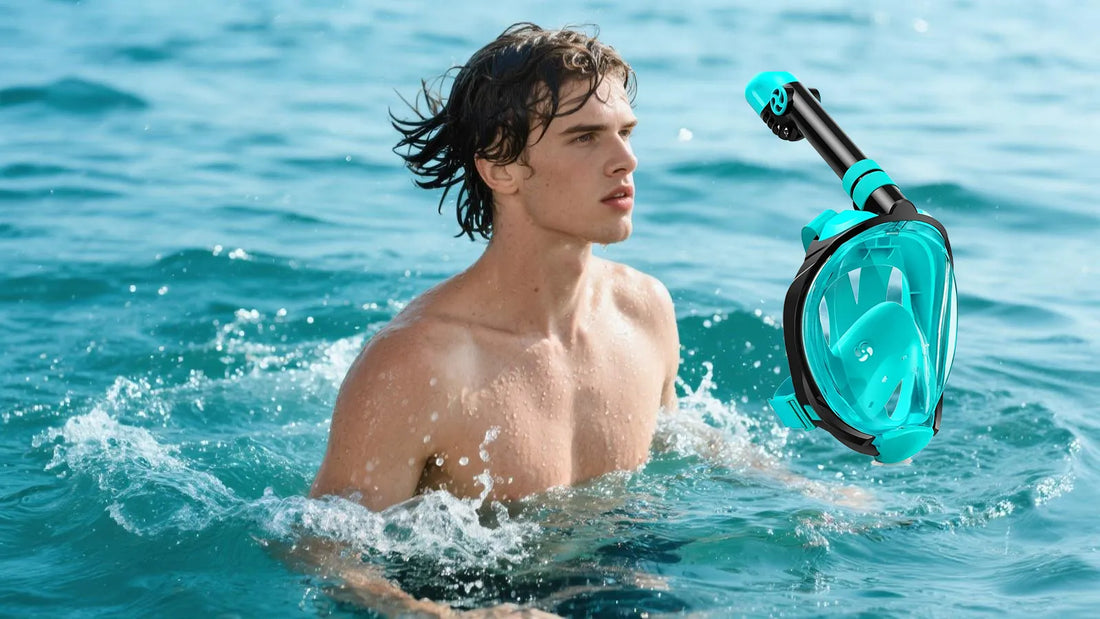Snorkeling is often seen as a gateway to exploring the underwater world, but many wonder if it’s accessible to those who don’t know how to swim. The good news is that snorkeling can still be an option for non-swimmers, provided certain precautions and techniques are followed. This article dives into the details of how non-swimmers can safely enjoy snorkeling and what to keep in mind before taking the plunge.
Understanding the Basics of Snorkeling
Snorkeling involves swimming on the surface of the water while using a snorkel, mask, and sometimes fins to observe marine life. Unlike scuba diving, snorkeling doesn’t require extensive training or certification. However, being comfortable in the water is essential. For non-swimmers, the idea of being in open water can be intimidating, but with the right approach, it’s possible to enjoy this activity safely.
Safety First: Essential Precautions for Non-Swimmers
Safety should always be the top priority when snorkeling, especially for non-swimmers. Here are some key precautions to consider:
- Use a Life Jacket or Flotation Device: Wearing a life jacket or other flotation device can provide the necessary buoyancy and confidence for non-swimmers. It ensures you stay afloat without expending energy.
- Stay in Shallow Water: Choose snorkeling spots with calm, shallow waters. This minimizes the risk of getting into deep areas where swimming skills are required.
- Snorkel with a Buddy: Never snorkel alone. Having a companion who can swim and assist if needed is crucial for safety.
- Practice Breathing Techniques: Before heading into the water, practice breathing through the snorkel on land. This helps you get comfortable with the equipment.
Choosing the Right Snorkeling Location
Not all snorkeling spots are suitable for non-swimmers. Look for locations with calm, clear waters and minimal currents. Popular options include protected lagoons, coral reefs close to the shore, and guided snorkeling tours designed for beginners. Researching the location beforehand can help ensure a safe and enjoyable experience.
Using the Right Equipment
Having the right gear can make a significant difference for non-swimmers. Here’s what to consider:
- Full-Face Snorkel Mask: These masks cover the entire face and allow natural breathing through the nose and mouth, making them easier to use for beginners.
- Fins: While not essential, fins can help with propulsion and stability in the water. Opt for shorter fins that are easier to manage.
- Wetsuit or Rash Guard: These provide additional buoyancy and protection from the sun or cold water.
Taking a Guided Snorkeling Tour
For non-swimmers, joining a guided snorkeling tour can be an excellent option. Professional guides are trained to assist beginners and ensure their safety. They often provide flotation devices and choose locations that are suitable for all skill levels. Additionally, they can offer tips and support to help you feel more comfortable in the water.
Building Confidence in the Water
Even if you don’t know how to swim, building some level of comfort in the water can enhance your snorkeling experience. Consider taking a basic water safety course or practicing in a controlled environment like a pool. Learning how to float and move in the water can boost your confidence and make snorkeling more enjoyable.
Common Challenges for Non-Swimmers
Non-swimmers may face specific challenges while snorkeling, such as anxiety, difficulty breathing through the snorkel, or feeling unsteady in the water. Addressing these challenges through preparation and practice can help you overcome them. For example, practicing breathing techniques and using a flotation device can alleviate anxiety and improve stability.
Tips for a Successful Snorkeling Experience
Here are some additional tips to ensure a positive snorkeling experience for non-swimmers:
- Start Slow: Begin with short sessions in shallow water and gradually increase your time in the water as you gain confidence.
- Stay Relaxed: Tension can make it harder to float and breathe. Focus on staying calm and enjoying the experience.
- Listen to Your Body: If you feel tired or uncomfortable, take a break and return to the shore.
- Respect Marine Life: Avoid touching or disturbing the underwater environment to protect both yourself and the ecosystem.
Alternative Options for Non-Swimmers
If snorkeling still feels too challenging, there are alternative ways to explore the underwater world. Glass-bottom boat tours, underwater observatories, and semi-submersible vessels allow you to see marine life without entering the water. These options can be just as rewarding and are perfect for those who prefer to stay dry.
Snorkeling doesn’t have to be off-limits just because you don’t know how to swim. With the right preparation, equipment, and mindset, non-swimmers can safely enjoy this incredible activity. Whether you’re floating in a calm lagoon or joining a guided tour, the underwater world is waiting to be explored. So, take the plunge and discover the beauty beneath the surface!

